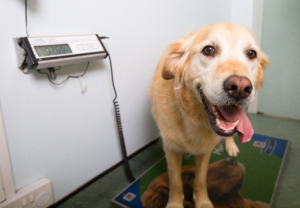
During a recent Instagram Q&A, I answered a question about joint supplements which resulted in a whirlwind of DM’s (Yeah- I’m getting down with the Insta lingo!). I realise this is a popular topic at the moment and so I decided it would be a good discussion to have on my blog.
Firstly, I am no expert in this area! If you are thinking about adding any supplement to your pet’s diet, always discuss it with your vet first. Some supplements can interfere with certain medications, or can have effects on other disease processes, so it’s important to get the go ahead from your vet.
So, the big question everyone is asking is- Do joint supplements actually work? The nutraceutical industry is huge in the pet world, and in the US 25 billion is spent annually on supplements, so that suggests that pet owners must see some benefit. People are usually surprised when I make them aware of the lack of evidence to support the use of joint supplements in dogs, glucosamine and chondritin particularly. Of the studies carried out in dogs, very few are of decent quality and of these studies the results can sometimes be conflicting and confusing. Still, joint supplements are becoming more evidence based and the individual ingredients present in most joint supplements have a lot of good evidence behind them when tested experimentally, or in a lab. As well as this, there is much anecdotal evidence to support the use of supplements amongst both veterinary professionals and pet owners, making their use in the management of osteoarthritis very much worth a try.
Osteoarthritis (OA) is the number 1 cause of chronic pain in dogs, so management of the disease process is so important. 1 in 5 dogs older than 1 year suffer from OA. It’s not just older dogs, although it becomes more common and more obvious as they get older. OA is a slowly progressive degenerative disease, so it can be left undiagnosed for a long time, which makes us wonder when or at what stage of our dog’s life should we begin joint supplements.

So, which supplements should we be using? The list of supplements available for dogs is endless, and choosing one is so difficult. The more you look into it, the more mind boggling it becomes. I feel that the best approach is decide which specific ingredients you would like your dog to get, and then see what combined supplements the ingredients are available in. For this reason, I don’t mention or get into brands of supplements much here, but more a handful of some ingredients I personally feel are worth mentioning. Again, I am not an expert and if I haven’t mentioned one that you are giving your dog it doesn’t mean it’s not worth giving. In fact, if I have failed to mention any that you find work well please let me know- I would love to hear about it.
The most commonly used joint supplements for dogs tend to be glucosamine and chondritin, and they’re certainly the ones most commonly mentioned in my consults. They’re in most supplements available and in many joint heath diets. People are always shocked to hear that glucosamine and chondritin have very little evidence behind them to suggest that they have any great effect on our pet’s unhealthy joints. In one of the largest studies performed on these supplements it was decided that they were not effective in managing clinical symptoms of OA. While they may be beneficial when starting them while our pet’s joints are still healthy, evidence actually shows that bioavailability is very poor (bioavailability is the ability of a substance to be absorbed and used by the body) and very little of these supplements actually reach the joint when it is inflamed and diseased. So, if your pet has been getting them for a long period of time with no obvious benefit, maybe it’s worth considering spending the money elsewhere? However, if you’re giving your dog glucosamine and chrondritin don’t worry, there is absolutely no harm- it is very well tolerated digestion wise with minimal side effects, and some studies have shown benefits in dogs with moderate OA in very long-term users, so perhaps your dog is or will be one of these pets!
In my own opinion, the most important supplement to have on board when dealing with OA is Omega 3 fatty acids (cold water fish sourced, containing EPA & DHA). These have the most robust clinical evidence to support their use. Evidence shows they have better bioavailability and a potent anti-inflammatory effect. Multiple trials have demonstrated an increase in weight bearing and a reduction in lameness. It is my understanding that in order to supplement this at a high enough level to be beneficial, it needs to be integrated into your pet’s food (eg. a diet enriched in Omega 3’s) rather than administered in extra supplement form. Dogs cannot digest it well enough to be given in tablet form at a high enough dose and it can cause tummy upset, so you need to ensure it is already present in the food you choose to feed your pet. My own dog’s eat Hills J/D prescription diet for this reason. There tends to be a lot of fibre added to these diets so the dog can digest it better.
Green lipped mussel has become popular and is showing great results in human studies. it is a mussel that grows naturally in New Zealand and is naturally rich in Omega 3’s, vitamins and minerals. It can be provided in a concentrated extract, so doses don’t need to be overly high in supplements. Studies in dogs are showing a reduction in pain and swelling and an increase in mobility.
Hyaluronic Acid is in quite a lot of combined supplements. It is a major component of synovial fluid and articular cartilage and is often used as an injection directly into the joints of dog’s suffering from OA. It can also be administered orally but has low bioavailability unless it has undergone a microbial fermentation process. So, you need to make sure that the one you choose has had studies to show that its bioavailability is sufficient.
Curcumin is derived from turmeric and has been popular amongst dog owners for a while now as it is known to have anti-inflammatory and anti-neoplastic effects. It actually has very low bioavailability though, so very little of it gets absorbed when ingested. Canine studies have shown no improvement in weight bearing or pain management in dogs with OA.
Eggshell Membrane is a relatively new ingredient but looks promising. It is derived from a protein rich layer in the membrane and studies show an increase in mobility and flexibility as well as an improvement in activity and mobility and improved pain scores.
Boswellia serrata has a potent anti-inflammatory effect. Canine studies have shown improved lameness scores, decrease in pain and increase in loading and daily activity. Human studies have also been promising. Apparently, this ingredient can react with some pharmaceutical products that may be used for treating OA, so check with your vet if your pet is receiving meds.
MSM (Methylsulfonylmethane) is a naturally occurring supplement used primarily as an anti-inflammatory and antioxidant for conditions such as arthritis and some cancers. While studies on this ingredient is limited, anecdotal evidence is looking promising which has resulted in it becomning popular.
CBD oil is relatively new to the veterinary world but becoming increasingly popular. CBD has had the THC removed, so it doesn’t have that euphoric effect everyone expects! CBD has an analgesic and anti-inflammatory effect, stimulates appetite and reduces neuropathic pain. It also helps reduce anxiety which often comes hand in hand with chronic pain. It can also have anti neoplastic effects. So far, studies are in favour of the safety and efficacy when using it in cases of OA.

Let’s not forget that the management of OA involves a multi modal approach. Joint supplements alone aren’t going to be enough to manage it. Weight management is majorly important. Excess weight massively impacts pain management and how the joint functions. Keeping your dog lean is one of the best ways you can help keep them comfortable and slow down the progression of the disease. I cannot stress how important this is. If you are struggling to manage your pet’s weight, then please speak with your vet or vet nurse as there are many nutritional options to help with this that will also include supplementation for joint health.
Physical therapy plays a big role in managing pain and keeping dogs strong and mobile and provides a lot of education and support for owners on how to achieve this. How your dog moves is so important- it should be frequent and low impact, and minimising the development of compensatory movement patterns.
Pain management is crucial, if your dog doesn’t want to exercise then their pain is not under control. Your vet can prescribe medications to reduce inflammation and ease chronic pain. It can be very difficult to achieve anything else unless your pet is comfortable, so if you’re unsure then schedule a check up and have a chat with your vet.

I hope this post has helped provide some understanding of joint supplements. It’s good to do your own research and decide what’s best for you and your dog. When you are choosing a supplement, ensure you’re buying from a reputable, reliable source who has carried out ample studies on their product.
Both my dogs suffer from OA. They are 10 and 11 but had joint injuries at a young age, so I began joint supplements when they were quite young. They have always been fed Hill’s J/D reduced calorie food. They aren’t overweight, but I knew that if they were to become overweight it would impact their joints badly, so I have always been strict with calories. I currently also supplement with Yu Move Advanced 360 as I am keen to get green lipped mussel into them and it is also a brand of supplement that I have consistently had recommended to me over the years, so this is my personal preference. One of my dogs, Toby, was recently diagnosed with intervertebral disc disease in his neck. His vet prescribed pain relief medication to help him cope when he was at his worst, but I also added CBD oil into the mix. He is a very anxious dog, and this is heightened when he is in pain. I found that it worked wonders for him. FYI- I have absolutely no affiliation with any of the manufacturers or products I am using!
I did an Instagram poll recently and a lot of the same supplements were brought up and recommended by you guys, I will share it on a post on Instagram and save it to my story highlights, it’s a great way to see what works for others and what is available to you if your vet may only be recommending one to two types.
Please remember- Nutritional supplements play only a small part in the management of the disease. Your pet’s treatment should involve a range of veterinary specialists- from your vet to rehabilitation specialist to behaviourists and nutritionists! There are so many different ways to improve your pet’s quality of life through making them comfortable and more mobile.





